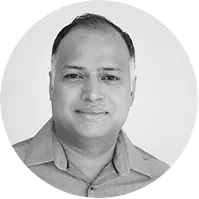I. Introduction
A vasectomy is a minor surgical process that helps prevent sperm from mixing with your semen. Consequently, your seminal fluid cannot fertilise the female egg. You will become sterile after the procedure.
Several medical experts paved the way for vasectomy in the early 19th century. Surgeon and anatomist Sir Astley Paston Cooper carried out several experimental surgeries on dogs’ vas deferens (sperm ducts) in the United Kingdom in 1830.
French surgeon Dr. Leon Gosselin performed vasectomies on dogs some 25 years later. He discovered the procedure did not drastically affect their sperm production. It wasn’t until 1971 when vasectomies became an effective and widely-used birth control technique.
In this article, we will explore no-scalpel vasectomy (NSV) as a patient-friendly option for Australian males. If you’ve been thinking about undergoing a vasectomy, this modern alternative could become a game changer for you.
II. What is a No-Scalpel Vasectomy?
As the term implies, a no-scalpel vasectomy (NSV) doesn’t require the use of a scalpel or stitches. Dr. Li Shunqiang first performed an NSV at the Chongqing Family Planning Institute in China in 1974.
Delegates from the World Health Organisation (WHO) and Access to Voluntary and Safe Contraception (AVSC) visited China in 1985. They examined alternative forms of vasectomy (including NSV) that year. Before long, Australian men began undergoing no-scalpel vasectomies. To this day, up to 30,000 Aussie males undergo a vasectomy procedure annually.
In a no-scalpel vasectomy, your doctor makes a tiny hole in your scrotum (the pouch of skin that contains your testicles). He will anaesthetise and numb your scrotum. Next, he will make a small hole (around 2 to 3 mm) in your skin and pull out your vas deferens (sperm duct). Your physician will then seal off, cut, or tie your sperm duct. Lastly, he will use just one or two stitches to seal the small puncture in your skin. The whole process typically takes half an hour.
On the other hand, a traditional vasectomy involves the use of a scalpel. Your physician will anaesthetise your scrotum and then make two tiny incisions using the scalpel. He will cut, tie, or seal each vas deferens from your testicles. It usually takes one week for men to recover from a traditional vasectomy. In contrast, men who undergo a no-scalpel vasectomy experience minimal trauma in their scrotum and resume their normal activities after only a few days.
Not only that, but a no-scalpel vasectomy also has fewer complications than its traditional counterpart. Since the former doesn’t require stitches, you don’t have to return to the doctor’s office to have them removed.
III. Why Choose No-Scalpel Vasectomy?
Shorter recovery time and fewer complications give you two good reasons to choose a no-scalpel vasectomy.·You will experience less pain, discomfort, and bleeding during the no-scalpel vasectomy procedure. You also don’t have to fuss over potential health issues arising after the procedure.
To support this claim, a 2014 study concluded a no-scalpel vasectomy was five times less likely to produce infections, blood clots, and other issues. Dr. David Stockton of the University of Tennessee Health Science Centre College of Medicine also cited a conclusion from the Cochrane Review in a Medscape article he wrote in 2021. Stockton wrote no-scalpel vasectomy (NSV), “as compared to traditional incisional technique, resulted in less bleeding, hematoma, infection, and pain, and a shorter operative time.” If you’re anxious about NSV, these studies will help put your mind at ease.
Many Australian men have taken the no-scalpel vasectomy route. Approximately one in four Aussie men who are at least 40 years old have done it in the past. NSV has gained serious traction over the years because of its low-cost and low-risk nature.
A no-scalpel vasectomy will also allow you to enjoy your regular daily activities after just a few days. In fact, some men who undergo a no-scalpel vasectomy resume their normal day-to-day activities after just one or two days.
IV. Is No-Scalpel Vasectomy Right for You?
Are you considering a no-scalpel vasectomy (NSV)? Getting an NSV is a potentially life-changing decision. Make sure to weigh your options very carefully before you proceed. Here are several factors to consider:
- Family planning goals: Most men decide to undergo a no-scalpel vasectomy because they want to become sterile. Are you torn between having more children and being content with your current number of offspring? If you’re undecided, make sure to discuss your family planning goals with your partner.
- Lifestyle considerations: Whether you’re single or in a committed relationship, undergoing a no-scalpel vasectomy will drastically affect your lifestyle.
If you’re a bachelor, becoming infertile could affect your future relationships. What if your future partner wants to have children? On the other hand, you also might have a change of heart in terms of becoming a father when you enter a committed relationship. Either way, the stability of your future relationship will hinge partly on your decision to have a no-scalpel vasectomy.
Men who are in committed relationships should weigh the pros and cons of having more children. Can they support more kids as they age? Is their household income sufficient to provide for these children? On the emotional front, are you and your partner patient enough to raise more children? It’s best to think long-term whenever you’re thinking about undergoing a no-scalpel vasectomy.
- Medical considerations: This factor pertains to your partner’s long-term health. Unfortunately, pregnancy is a huge risk for some women. It can even put their lives at risk. Hormonal birth control is also a serious risk for some women. Check with your partner’s gynaecologist if she can bear children or take hormonal birth control without any serious repercussions.
- Vasectomy reversal: Plans in life change. Lifestyle and family considerations are no exception. It’s highly possible you will give in to the urge to become a father again some time down the track. However, you may have already undergone a no-scalpel vasectomy. Fortunately, a vasectomy reversal is possible. Your physician can do it in one of two ways:
- Vasovasostomy: In this scenario, your doctor will reattach the two ends of your vas deferens (sperm ducts).
- Vasoepididymostomy: Your physician will attach the ends of your sperm ducts to your epididymis (the organ that attaches your testis to your sperm ducts)
Alternatively, your doctor can extract your sperm for the in vitro fertilisation process. He will also collect eggs from your partner’s ovaries in the lab. Your sperm will fertilise the eggs and hopefully produce a baby.
If you decide to undergo a vasectomy reversal, bear in mind it’s more complicated than a no-scalpel vasectomy. There’s no guarantee the reversal will be successful. Plus, you also risk infection and bleeding if you decide to have a vasectomy reversal.
The outcome largely depends on the skill and experience of the surgeon who will perform the procedure. With that in mind, do some research on the best vasectomy reversal surgeons in your area.
V. The No-Scalpel Vasectomy Process: Step-by-Step Walkthrough
Initial consultation: What to expect.
When you consult your physician before your no-scalpel vasectomy, you will share your health background or any health issues you may have. If you take any supplements or prescription medicine, tell your doctor. He alone can tell you if you should avoid these supplements or medicines before your procedure.
Pre-operative preparations.
Wear snug clothing on the day of your no-scalpel vasectomy. Your physician may recommend trimming the hair in your scrotum area before he performs the vasectomy. You will wear a hospital gown during the procedure. Learn more about no-scalpel vasectomy pre-operative instructions.
The procedure itself: Explaining each step.
First, your physician will ask you to lie down on the operating table with your legs spread apart. He will inject an anesthetic into your scrotum or groin area so you won’t feel pain or discomfort during your vasectomy. Pain during a no-scalpel vasectomy is minimal to nil. Many patients say the anesthetic was the most uncomfortable part of the process.
Next, your doctor will feel your vas deferens (sperm duct) under your skin. Once he finds your sperm ducts, he will use a special clamp to stabilise them and hold them in place.
Your physician will use a needle-like tool to create a tiny hole in your scrotum area. He will pull out your sperm ducts through that hole and cut, tie, or seal them. Your doctor will return your sperm ducts to their normal positions afterward.
Postoperative care and recovery.
A vast majority of no-scalpel vasectomy patients feel physically fit and able after their procedure. However, your doctor will only allow you to go home after you rested immediately following the vasectomy. He will also let you go home after you show no signs of bleeding and show him you can walk comfortably.
It’s important you rest at home after your no-scalpel vasectomy procedure so you can recover within the expected one- to two-day time frame. Avoid working and doing strenuous activities for at least 48 hours after you leave your physician’s clinic.
You can take a bath one day after the procedure. Make sure the wound doesn’t get wet during your 48-hour recovery period. Avoid pulling or scratching the affected area while you are recovering. Leave the bandage or gauze on your scrotum for three days after the procedure. Rinse the wound with soap and water after removing the bandage. Avoid wiping your scrotal area vigorously with a towel. Pat it gently with your towel during the drying process instead.
Wear comfortable underwear or scrotal support during your recovery period. Physicians typically allow their patients to have sexual intercourse two or three days after the no-scalpel vasectomy.
However, bear in mind the effects of vasectomy aren’t immediate. You will still ejaculate your normal sperm count for an estimated 10 to 20 ejaculations after your no-scalpel vasectomy. It will take roughly 90 days before you become sterile.
When you reach the 90-day waiting period, your doctor will perform a semen analysis to confirm your sterility. Since you will still ejaculate sperm before your semen analysis, use contraceptives such as condoms whenever you have intercourse. When your physician confirms you’re sterile, you don’t need to use condoms anymore.
It’s possible to experience slight discomfort or pain during your 48-hour recovery period. Using an ice pack will help relieve the discomfort. If your doctor gives you prescription medicine, make sure to take it as he prescribed.
If you experience any of the following post-vasectomy symptoms, see your doctor as soon as possible:
- If you develop a fever within one week after your no-scalpel vasectomy.
- If your wound produces blood or pus.
- If the pain or swelling in your wound persists well after the 48-hour recovery period.
- If your partner feels she is pregnant. This is a possible red flag because it could be a sign that your no-scalpel vasectomy failed somehow.
Learn more about vasectomy after care.
VI. Choosing the Right Clinic
Choosing a reputable professional for your no-scalpel vasectomy (NSV) will help put your mind at ease. If you’re in the hands of a qualified surgeon from a reputable clinic, you’re confident the procedure will go smoothly. Ensure your surgeon is an NSV specialist who has many years of training and experience.
Your clinic’s location is also a crucial factor. If your physician uses a local anaesthesia, you can drive on the way back home. However, if your doctor uses an IV twilight sedation, you won’t be able to drive for the next 24 hours. Consequently, a companion must drive you home after the no-scalpel vasectomy (NSV) procedure.
Make sure your physician’s clinic meets the minimum requirements for a no-scalpel vasectomy procedure:
- A waiting area with a toilet. This room may also serve as your recovery area after the procedure.
- A counseling room where you can address your concerns with your doctor.
- An examination room where you will take pre- and post-procedural assessments.
- A clean surgical theatre where your physician will perform the no-scalpel vasectomy.
Ensure the surgical theatre has a warm temperature on the day of the procedure. The ideal room temperature should be between 20°C and 25°C. Experts say this warm environment helps relax your scrotum, reduce operating time, and minimise complications.
You must also consider the cost of your no-scalpel vasectomy. The cost will depend on several factors:
- Location
- Insurance coverage
- Medical facility
If you’re an Australian citizen or permanent resident, Medicare (the country’s universal health care insurance) will help cover some of your expenses for your no-scalpel vasectomy. If you don’t have Medicare access, you will pay more.
If you will undergo NSV at a local medical centre, the typical cost is around $750. You will pay only $480 or so after you receive your Medicare refund.
On the other hand, you will pay a higher NSV fee at a private day hospital. If you decide to receive a local anaesthetic, you will pay roughly $690 after you get your Medicare refund. If you prefer IV twilight sedation for your NSV, the after-Medicare fee goes up to approximately $750.
You must also consider the reputation of the medical centre or hospital you’re considering for your NSV. A medical facility with excellent patient reviews should rank high on your short list. Read each review carefully. If you feel a certain facility is right for you after reading its reviews, give it a try.
VII. Preparing for a No-Scalpel Vasectomy: Dos and Don’ts
Here are several do’s and don’ts prior to your no-scalpel vasectomy (NSV):
Do’s:
- Prepare yourself mentally: Talk to your partner, meditate, chant affirmations, and listen to soothing music during the days leading up to your NSV. These tactics will help quell your anxieties and give you peace of mind prior to the procedure.
- Shave: Trim pubic hair in your scrotum area one day before your no-scalpel vasectomy. This will help facilitate the procedure and save time.
- Eat a hearty meal: Consume a healthy meal before you see your doctor so you won’t feel lightheaded during the procedure.
- Arrive early: Showing up late for your NSV might increase your stress levels. It’s always better to arrive early.
- Bring your earphones and devices: Some physicians encourage their patients to listen to music or podcasts or play games during the procedure. These will help lower your stress levels and put your mind at ease.
- Bring an athletic supporter (jock strap) or compression shorts: This kind of athletic gear will help support your scrotal area after the procedure.
Don’ts:
- Take certain medications: Avoid consuming blood thinners one week prior to your NSV procedure. They could increase the risk of bleeding. Do not take non-steroidal anti-inflammatory drugs (NSAIDs) such as Ibuprofen and Naproxen two days before undergoing a vasectomy.
- Drink alcohol: Don’t consume alcoholic beverages 48 hours before and after your no-scalpel vasectomy.
VIII. Pain Management Strategies and Comfort Measures
Your doctor will inject a local anaesthetic under the skin of your scrotum area. The area surrounding your sperm ducts will become numb. It’s this part of the no-scalpel vasectomy (NSV) that is typically the most uncomfortable. Listening to music or podcast or playing a game on your device will help keep your mind off the discomfort.
Once the procedure is finished, wearing an athletic supporter or jock strap will help secure the bandage and apply pressure to your scrotum.
Place an ice pack on the affected area for no more than 20 minutes at a time when you get home. This will help relieve discomfort and cramping in your scrotal area. Do not take Ibuprofen or aspirin because these medications could increase the chances of bruising or bleeding. Consult your doctor for the appropriate medicines.
Stay home for the next 48 hours before resuming your normal activities. Refrain from doing strenuous tasks and exercises for one week.
IX. No-Scalpel Vasectomy Recovery: Your Comprehensive Guide to Healing
Men who undergo a no-scalpel vasectomy typically resume their normal activities one to two days after the procedure. It’s best to rest for 48 hours afterward to make sure you experience a smooth recovery.
Although you can resume most of your normal activities, refrain from lifting heavy or doing strenuous tasks for one week after your NSV procedure. If your job requires heavy lifting and strenuous tasks, ask your manager if you can do lighter activities at the office for a week. Lifting objects heavier than 10 pounds risks reopening your wound.
Apply an ice pack intermittently to your scrotal area for a maximum of 20 minutes at a time for the first 48 hours of your recovery period. Cover your incisions with one or two gauze pads for the next 72 hours after your procedure. It’s normal to discover some blood on the gauze pads. If you feel the bleeding is excessive, contact your physician immediately.
You should also contact your doctor if any of the following symptoms occur:
- Fever
- Chills
- Infection
- Swelling
- Urinating issues
However, bear in mind potential complications from a no-scalpel vasectomy are rare. In fact, a study published in the Kathmandu University Medical Journal in 2007, only 14 out of 926 male patients experienced complications from NSV. Scrotal haematoma (five patients) and infection (four patients) were the most common.
You may take a shower 24 hours after your NSV procedure. However, take extra precautions when drying your scrotum area. Avoid wiping it aggressively with a towel after you take a bath or shower. Gently pat the affected area with a towel instead.
Do not engage in sexual intercourse or vigorous exercise for a week after your no-scalpel vasectomy. Ejaculating may result in discomfort in your groin and testicular areas. Use birth control methods such as condoms when you resume your sexual activities because your semen still has sperm one week after you undergo a vasectomy.
X. Talking About No-Scalpel Vasectomy with Your Partner
If you’re in a committed relationship, undergoing a no-scalpel vasectomy (NSV) is a decision that will affect you, your partner, and your children (if you have any). On that note, it’s imperative you discuss this potentially-life changing moment with your partner.
Open communication is extremely important. Each partner must share his and her thoughts on NSV and how it will affect their lifestyle down the track. Sharing your sentiments on NSV will help you avoid potential conflict in the future.
The most common NSV-related concern among couples is conception. Males agree to undergo a no-scalpel vasectomy so they could stop having children while maintaining intimacy with their partners. Although a vasectomy can be reversed, think of it as a permanent procedure – once you decide you’re all in, there’s no turning back. Not only that, but a vasectomy reversal is also costly and not 100 percent effective.
Some men decide to undergo an NSV because pregnancy is a serious health risk for their partners. Make sure to get a second (or even third) opinion from a reputable gynaecologist regarding your partner’s risk. If her doctor confirms her getting pregnant could result in serious complications, undergoing a no-scalpel vasectomy could become one of your options.
If you and your partner cannot make an informed decision on no-scalpel vasectomy, consider talking to a professional therapist. You can also seek the advice of professionals at a local family planning clinic. These people can offer insights on NSV you and your partner haven’t thought of before. Consequently, you will make a more informed decision.
XI. Frequently Asked Questions
Will a no-scalpel vasectomy (NSV) affect my orgasm, ejaculation, and erections?
No. In fact, many men experience a higher libido after they undergo NSV. Your ejaculation volume could decrease by 5 to 10 percent after the procedure.
Will I become sterile right away after my NSV procedure?
No. You will still have sperm in your semen immediately after your NSV procedure. It takes around 10 to 20 (sometimes 30) ejaculations before your semen becomes sperm-free. Use other forms of contraception (such as condoms) for three months after your procedure. Once your physician deems your semen analysis reveals no sperm content, you may have intercourse without contraception.
Does a no-scalpel vasectomy protect me from sexually-transmitted infections (STIs)?
Unfortunately, no. A no-scalpel vasectomy will only make you sterile so you cannot make your partner pregnant. Using a latex condom is arguably the best way to protect yourself from STIs.
Will a no-scalpel vasectomy increase my prostate cancer risk?
No. Studies have proven there is no link between no-scalpel vasectomy and prostate cancer.
Will undergoing a no-scalpel vasectomy (NSV) produce other long-term health risks?
No. Many studies have proven no-scalpel vasectomies do not produce long-term health risks.
Will my sexual endurance improve after undergoing an NSV?
Expect your sexual performance to remain the same before undergoing an NSV. However, since pregnancy-related anxieties will likely diminish after your post-surgical semen analysis, your sexual comfort level with your partner will likely improve.
Can I have my no-scalpel vasectomy reversed?
Yes. You can reverse your no-scalpel vasectomy. However, the reversal procedure is expensive. It also doesn’t have a 100 percent success rate.
XII. Life After No-Scalpel Vasectomy: Navigating Changes and Enjoying Intimacy
Will your life change drastically after undergoing a no-scalpel vasectomy? All indications say it won’t. In terms of your sex life, you will enjoy better sexual intimacy with your partner.
Some men fear undergoing an NSV might hinder their active sex lives On the contrary, recent studies reveal some encouraging findings on the sexual satisfaction of men who underwent a vasectomy.
According to the 23 June 2017 issue of the Central European Journal of Urology, “vasectomy does not have a negative impact on the sexual satisfaction of the affected couples. In fact, sexual satisfaction improved for the sterilised men, while the satisfaction of the women was not reduced by the vasectomy.”
If you’re one of the men who fear a no-scalpel vasectomy (NSV) will drastically affect their sex lives, you can put your doubts to rest once and for all.
XIII. Navigating Emotions: Coping Strategies for Pre- and Post-No-Scalpel Vasectomy
Any medical procedure can be nerve-wracking. Undergoing a no-scalpel vasectomy is no exception.
It’s perfectly normal to be nervous prior to your NSV procedure. Many thoughts could be swirling through your mind. How will I cope with the discomfort? Will I be able to get through this?
Don’t deny those emotions. Acknowledge them. You are not alone in this endeavour. Bear in mind you’re one of 30,000 Australian men who undergo a vasectomy every year.
Your doctor will discuss the possible risks and benefits of a no-scalpel vasectomy during your consultation prior to the procedure. It’s arguably the best coping strategy before you undergo an NSV. Sharing your thoughts with a trained professional will help put you at ease.
During your pre-operative consultation, your physician will inform you an NSV will not make you sterile right away. He will also tell you that you and your partner must use alternative forms of contraception (such as latex condoms) for several weeks after the procedure. When your semen analysis reveals no sperm content, you may have sexual intercourse without contraception.
No-scalpel vasectomies typically have a higher than 99 percent success rate. With that in mind, the chances of you experiencing emotional trauma after the procedure are slim to nil.
If, for some reason, you experienced side effects or some other obstacle, discuss your sentiments with your partner and your physician. Your inner circle will provide you with much-needed support and encouragement.
XIV. Conclusion
A no-scalpel vasectomy (NSV) is a patient-friendly birth control alternative for Australian men. The procedure doesn’t involve any scalpel or stitches and takes approximately 20 to 30 minutes to complete. Since no stitches are involved in an NSV, you don’t have to return to your doctor’s office to have them removed.
No-scalpel vasectomies also produce less pain, discomfort, and bleeding than its traditional counterpart. If you are the squeamish type, an NSV should be right up your alley. Not only that, but no-scalpel vasectomies are also affordable especially if you have Medicare health coverage.
Recovery time for no-scalpel vasectomies typically take 48 hours. However, men should avoid heavy and strenuous activities for one week after the procedure. They should also use other forms of birth control for the next eight to 12 weeks until their sperm count diminishes drastically.
Studies have repeatedly proven no-scalpel vasectomies have no adverse effects on the sex drives, ejaculations, orgasms, and erections of males. On the contrary, a vast majority of these NSV patients’ libidos increased. No-scalpel vasectomies also did not increase the risk of prostate cancer and heart disease.
All things considered, no-scalpel vasectomy (NSV) is a safe, cost-effective, and permanent birth control alternative for Australian men.
XV. Additional Resources
https://thevasectomist.com.au/no-scalpel-vasectomy/
https://urology.uw.edu/patient-care/conditions-and-treatments/minimally-invasive-vasectomy
https://www.healthline.com/health/mens-health/no-scalpel-vasectomy
https://doh.gov.ph/sites/default/files/publications/NSV_Training_Manual_for_Facilitator.pdf
https://emedicine.medscape.com/article/148512-overview?form=fpf
https://www.advancedurology.net/blog/5-factors-to-consider-before-getting-a-vasectomy
https://www.bellinghamurologygroup.com/post/5-factors-to-consider-before-getting-a-vasectomy
https://www.urophoenix.com/2022/08/10/vasectomy-reversal-pros-and-cons/
https://www.vasectomy.org.au/cost/
https://www.pollockclinics.com/no-scalpel-vasectomy/before-vasectomy/
https://www.advancedurologyinstitute.com/what-is-vasectomy-recovery-like/
https://www.norcalvas.com/vasectomy-blog/2020/1/29/no-scalpel-vasectomy-recovery-what-to-expect
https://my.clevelandclinic.org/health/treatments/4423-vasectomy
https://drsnip.com.au/how-to-discuss-having-a-vasectomy/
https://www.abc.net.au/everyday/tips-for-having-vasectomy-talk-with-partner/100007604
https://www.uptodate.com/contents/vasectomy-beyond-the-basics/print
https://vasectomy.me.uk/faq-clinical/
https://www.ncbi.nlm.nih.gov/pmc/articles/PMC5656365/
https://gentleproceduressydney.com.au/vasectomy/
https://thevasectomist.com.au/history-of-vasectomy/
https://www.ncbi.nlm.nih.gov/pmc/articles/PMC5583057/
https://www.sandiegovasectomycentercentre.com/how-effective-is-a-no-needle-no-scalpel-vasectomy/
https://www.ncbi.nlm.nih.gov/pmc/articles/PMC8255399/
XVI. Call to Action
Have you undergone a no-scalpel vasectomy? We encourage you to share your NSV experience to help enlighten and encourage other men. Alternatively, don’t hesitate to ask your NSV-related questions in the comment section below.
Here at Scalpel Free Vasectomy, we aim to promote a supportive community for individuals who are considering a no-scalpel vasectomy. Please feel free to give us a call at 1300 677 647. Our team of dedicated professionals will help address your concerns as soon as possible.

Dr.Raj Selvarajan MBBS MRCS(Ed) MRCGP(UK) FRACGP MMed(UQ)
Scalpel Free Vasectomist,
Course Organiser – Advanced Workshop in No Scalpel Vasectomy (HealthCert)






